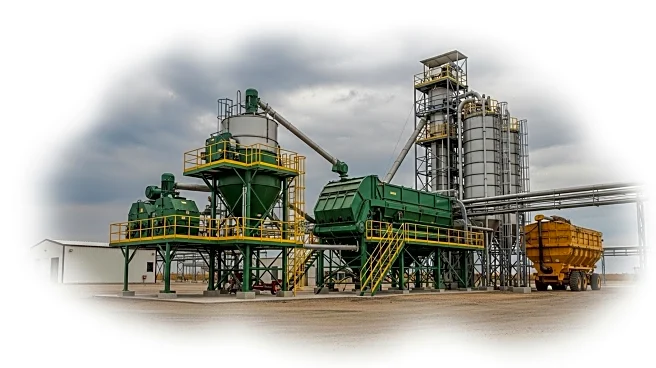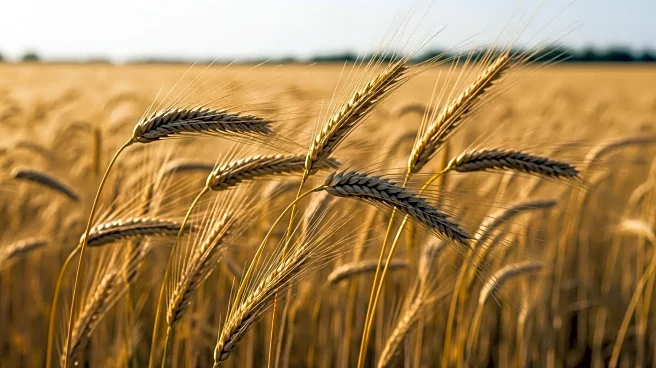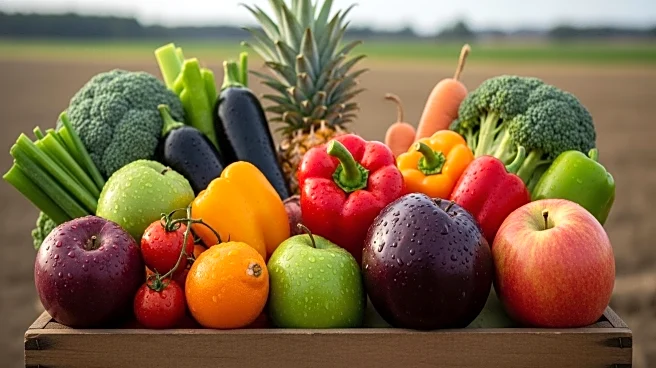What's Happening?
The U.S. Department of Agriculture (USDA) has revised its forecast for farm income in 2025, citing a downturn in the crop sector that outweighs gains in cattle production. The Economic Research Service's latest report projects net cash farm income at $180.7 billion, marking a 25.3% increase from the previous year when adjusted for inflation. This figure is a reduction from the February forecast of $193.7 billion. Similarly, net farm income is expected to reach $179.8 billion, a 37.2% rise over 2024, yet slightly below the earlier estimate of $180.1 billion. Despite these adjustments, both income measures remain above the 20-year average, bolstered by significant government payments to row crop producers. Direct government payments are anticipated to hit $40.5 billion, the highest since 2020, driven by emergency aid approved by Congress. Farm cash receipts are projected to rise by 4.7%, though this masks a 2.5% decline in crop receipts, contrasted by an 11.2% increase in livestock receipts.
Why It's Important?
The USDA's revised forecast highlights the ongoing volatility in the agricultural sector, with significant implications for U.S. farmers and the broader economy. The disparity between crop and livestock sectors underscores the challenges faced by crop producers, who are grappling with declining receipts for corn, soybeans, and wheat. Conversely, livestock producers are benefiting from increased sales, particularly in cattle and hogs. The substantial government payments reflect continued federal support aimed at stabilizing the agricultural economy amid trade policy impacts and market uncertainties. This financial assistance is crucial for maintaining farm operations and supporting rural economies. The adjustments in farm income forecasts also signal potential shifts in agricultural policy and market strategies as stakeholders navigate these economic pressures.
What's Next?
Looking ahead, the agricultural sector may see further policy interventions as Congress considers additional emergency assistance to mitigate the effects of trade policies. The USDA's projections suggest a need for strategic planning among farmers to adapt to market fluctuations and optimize production. Stakeholders, including policymakers and agricultural organizations, will likely focus on addressing the disparities between crop and livestock sectors to ensure balanced growth. The evolving economic landscape may also prompt discussions on sustainable farming practices and diversification to enhance resilience against future market disruptions.











